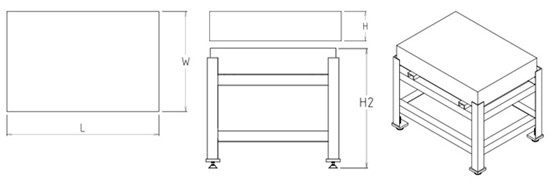dec . 19, 2024 19:37 Back to list
one inch check valve
Understanding the One-Inch Check Valve Functionality and Applications
A check valve is a critical component in many fluid control systems. Specifically, the one-inch check valve plays a vital role in allowing fluids to flow in one direction while preventing backflow, thus maintaining the system's integrity. This article delves into the functionality, types, applications, and maintenance considerations of one-inch check valves.
What is a One-Inch Check Valve?
A one-inch check valve is typically defined by its nominal size of one inch—meaning it has an inner diameter of approximately one inch. It is designed to automatically prevent backflow without the need for an external power source or operator control. This passive mechanism is essential in various industrial, commercial, and residential applications where maintaining unidirectional flow is crucial for system efficiency and safety.
Working Principle
The operation of a one-inch check valve revolves around the differential pressure created by the fluid's movement. When fluid flows in the intended direction, it lifts a disc, ball, or flap inside the valve, allowing the flow to pass through. Conversely, when the flow reverses, the disc or ball is pushed back into the seat of the valve, creating a seal that prevents backflow. This simple yet effective mechanism helps maintain system pressure and protects pumps and other system components from potential damage caused by reverse flow.
Types of One-Inch Check Valves
1. Swing Check Valve This type features a hinged disc that swings open when the fluid flows in the desired direction and swings closed when the flow reverses. Swing check valves are often used in applications where low-pressure drops are important.
2. Lift Check Valve This valve has a seat and a disc that moves vertically to allow fluid flow. It is more sensitive to flow direction changes and is commonly used in high-pressure applications.
3. Ball Check Valve A ball check valve uses a ball that sits in a seat. When fluid flows in the correct direction, the ball moves away from the seat. When flow stops or reverses, the ball falls back into the seat due to gravity, creating a tight seal.
4. Dual Plate Check Valve This type utilizes two plates that pivot on a hinge, allowing for a compact design. Dual plate check valves are ideal for high-flow applications and are favored in pipeline systems due to their low-pressure drop characteristics.
Applications of One-Inch Check Valves
One-inch check valves have diverse applications across various industries
one inch check valve

- Water and Wastewater Management These valves are commonly used in municipal water systems to prevent backflow and contamination in drinking water supplies. - Pumping Systems In commercial and industrial applications, one-inch check valves protect pumps by preventing backflow, ensuring they operate efficiently and reducing wear and tear.
- HVAC Systems In heating, ventilation, and air conditioning systems, check valves help maintain flow direction and stabilize system pressure, improving overall efficiency
.- Fire Protection Systems Used in fire sprinkler systems, check valves ensure that water flows correctly, allowing for rapid response during a fire emergency.
- Manufacturing Processes In various manufacturing settings, these valves are essential for controlling fluid flow in production lines and preventing cross-contamination between product batches.
Maintenance Considerations
Proper maintenance of one-inch check valves is essential for reliable operation. Here are some key maintenance practices
- Regular Inspections Periodically examine the valve for signs of wear, leakage, or corrosion. Early detection of issues can prevent significant failures.
- Cleaning Ensure that the valve and seat are clear of debris and buildup that can hinder operation.
- Replacement of Worn Parts If the disc, ball, or internal components are worn, replace them promptly to maintain optimal performance.
- Monitoring System Pressure Maintaining appropriate pressure levels within the piping system can prolong the life of the check valve and enhance its reliability.
Conclusion
The one-inch check valve is an indispensable component in fluid control systems, playing a crucial role in preventing backflow and ensuring efficient operation. Understanding its functionality, types, applications, and maintenance needs is vital for anyone involved in plumbing, manufacturing, or facility management. With proactive care and appropriate application, one-inch check valves can significantly enhance system reliability and safety.
-
Why Metric Trapezoidal Thread is Ideal for Precision Motion ControlNewsAug.05,2025
-
The Unique Properties of a Block of Granite for Industrial UseNewsAug.05,2025
-
The Role of Flanged Y Strainers in Preventing Pipeline ClogsNewsAug.05,2025
-
The Importance of Regular Calibration for Master Ring GagesNewsAug.05,2025
-
How a Cast Iron Surface Table Enhances Accuracy in ManufacturingNewsAug.05,2025
-
Comparing Different Check Valve Types for Optimal Flow ControlNewsAug.05,2025
Related PRODUCTS









